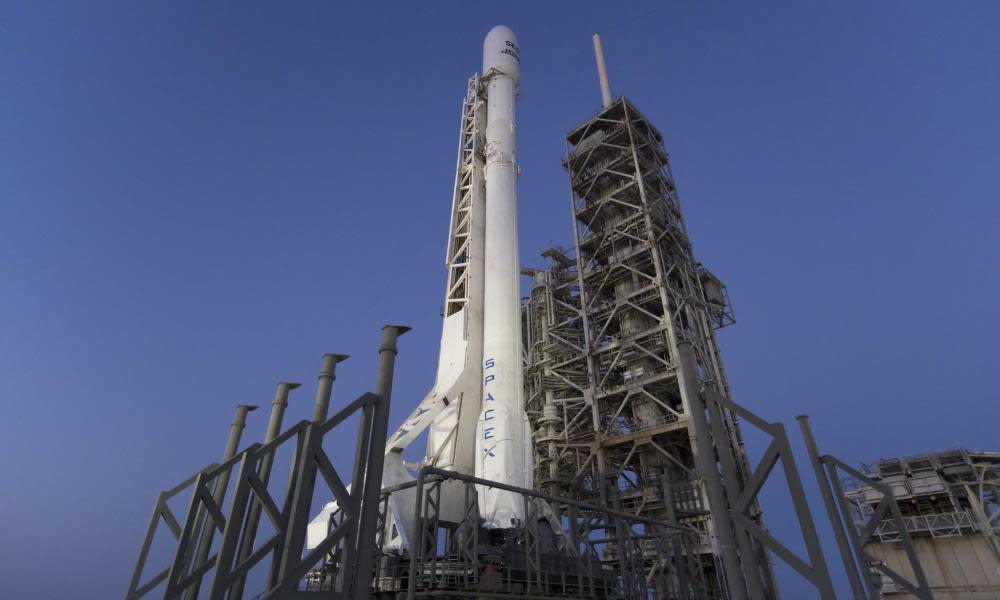SpaceX becomes first to re-fly used rocket

SpaceX launched its first “pre-flown” rocket on Thursday, marking the first time anyone has relaunched a booster into space in what CEO Elon Musk called “a milestone in the history of space”.
“This is going to be ultimately a huge revolution in spaceflight,” Musk said on a SpaceX broadcast of the launch.
He said that accomplishment – to “fly and re-fly an orbital-class booster” – was like finally achieving reliable aircraft rather than throwing away an airplane after every flight.
“It’s taken us a long time, a lot of difficult steps along the way,” he said, “but I’m just incredibly proud of the spaceflight team.”
The success is a step toward vastly less expensive spaceflight, which some hope can revolutionize travel in the solar system and take humans to Mars. While Nasa for decades used reusable spacecraft – its famous space shuttle fleet – the space agency has found that the intense maintenance the shuttles need makes them more expensive than rockets, at least with current technology.
“No one has ever done anything like this before,” SpaceX CEO Gwynne Shotwell said in a company broadcast before the launch. “We’re not one-way trip to Mars people. We want to make sure that whoever we take can come back.”
Under clear skies at the Kennedy Space Center, near Cape Canaveral, Florida, SpaceX launched its partially recycled Falcon 9 rocket at 6.37pm local time. A few minutes later the booster separated from its payload, to raucous cheers from engineers at the space center.
Then the rocket sank downward back toward the earth, burning back through the shield of the atmosphere, on its way toward its destination: a drone ship in the Atlantic Ocean, called the Of Course I Still Love You.
The equivalent of a 14-story building, the rocket hurtled downward at nearly a mile a second, thrusters firing to slow down, until finally it landed, secure and upright on the ship, to a final burst of applause.
The rocket had already secured its place in SpaceX’s history: in April 2016 it became the first rocket to successfully land on a droneship in the Atlantic, after a supply mission to the International Space Station. The booster – the nine-engine base of the rocket – was then taken back to the mainland and refurbished.
The booster carried a communications satellite for the Luxembourg company SES, which reportedly received a discount on the launch, which normally cost around $60m per launch. Reliable, reusable rockets could dramatically lower that cost, making it easier for space agencies and private companies to get satellites, telescopes, supplies and, eventually, people into space.
SpaceX first landed one of its Falcon 9 rockets in 2015, a month after another tech billionaire, Jeff Bezos, and his company Blue Origin landed. A smaller rocket has reached the lower edge of outer space – still far below the orbital zones reached by SpaceX missions. SpaceX has launched and landed eight of 13 attempted rocket launches, with several explosive failures over the years. Blue Origin has launched and landed four rockets, and this month Bezos unveiled a new, larger rocket booster as well as a planned tourist capsule.
Two would-be space tourists have already signed up to travel with SpaceX, Musk revealed last month, without any details about who the “private citizens” were or what “significant deposit” they paid to fly around the moon. He said they are aiming for a 2018 mission, even though SpaceX has yet to test the heavy rocket that would carry people, or to take any humans into space.
Musk’s ambitions have costly risks. One of SpaceX’s rockets exploded on its launch platform last September, destroying the booster, the spacecraft and its cargo – a multimillion-dollar satellite, in part owned by Facebook – setting back the company’s plans to relaunch a used rocket. The explosion also underscored the dangers for human passengers on private spacecraft, and a government audit released this year questioned whether SpaceX could safely resolve rocket problems or realize some of its lofty goals.
Ever optimistic, Musk has said that he believes most rocket parts can be used dozens of times, and that even heat shields could survive more than 10 burning passages through the atmosphere.
Nasa is working on its own new rocket, called the Space Launch System, whose designs would make it the most powerful rocket yet devised. The agency hopes to use the SLS to send explorer spacecraft and robots into deep space, and humans to an asteroid and Mars.


